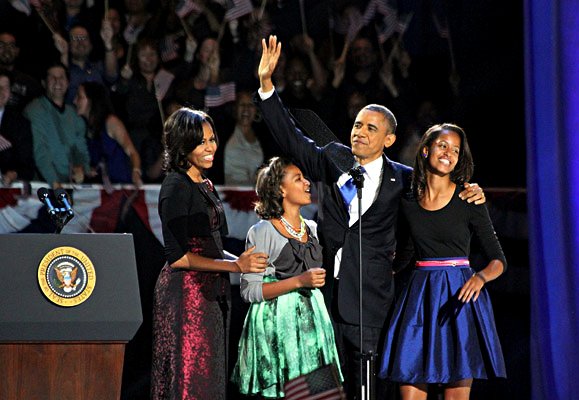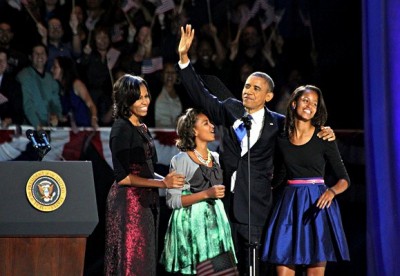Dr. Hayat Alvi for BeyondHeadlines
Now that President Barack Obama has been anointed for a second term, what can be expected in the coming four years regarding U.S. policies pertaining to the Middle East and North Africa (MENA) and South Asia? The top items on the list are fairly easy to cite: Iran and its nuclear program; the 2014 troop withdrawal from Afghanistan; ongoing civil war in Syria, with no substantive positions or resolutions in the international community; status quo regarding the Palestinian-Israeli conflict; U.S. foreign aid continuing to flow to Israel, Egypt, and Afghanistan/Pakistan; and continuous counter-terrorism strategies being carried out in Yemen and the Af-Pak region.
Around the corner, there are already some sharp curves in the road. To begin with, the shocking announcement of General David Petraeus’s swift departure as CIA chief leaves many scratching their heads. Some analysts assume that it has much to do with his forthcoming testimony about the tragedy in Benghazi, Libya. The entire event, from the U.S. government’s version, or versions, remains a mystery, hence the Congressional hearing demanding some answers.
Second, the January 2012 announcement that the U.S. has a new defense strategy with a shift of focus towards the Asia-Pacific (also referred to as “the pivot”) has implications for U.S. involvement in the Middle East. The document of the new defense strategy is entitled, “Sustaining U.S. Global Leadership: Priorities for 21st Century Defense.” In the Introduction, the document states: “While the U.S. military will continue to contribute to security globally, we will of necessity rebalance toward the Asia-Pacific region.”
While the pivot is serious, the strategy insists that the U.S. will maintain assets in the Persian Gulf region, particularly to keep Iran in check and keep commerce flowing through the Strait of Hormuz. Page two of the Defense Strategy discusses the Middle East:
“Our defense efforts in the Middle East will be aimed at countering violent extremists and destabilizing threats, as well as upholding our commitment to allies and partner states. Of particular concern are the proliferation of ballistic missiles and weapons of mass destruction (WMD). U.S. policy will emphasize Gulf security, in collaboration with Gulf Cooperation Council countries when appropriate, to prevent Iran’s development of a nuclear weapon capability and counter its destabilizing policies. The United States will do this while standing up for Israel’s security and a comprehensive Middle East peace. To support these objectives, the United States will continue to place a premium on U.S. and allied military presence in –– and support of –– partner nations in and around this region.”
Many speculate that China’s rise and increased militarization have triggered the U.S. shift, and India’s emerging power also flashes on the U.S. radar. The Asia focus has a lot to do with the economy. Commercial and trade relations in the region are projected to expand, and with the current global financial crisis, the U.S. in particular needs to broaden its economic horizons. In fact, President Obama will be the first U.S. president to visit Burma. That is very telling.
Third, the U.S. is selling weapons and military hardware to the Gulf Cooperation Council (GCC) countries with great fervor, and they are buying them with equal insatiability. The GCC states fear the repercussions of an attack by Iran. The U.S. is also repeatedly ensuring GCC allies that missile defense programs, a sort of “security umbrella,” will be put in place to protect them from incoming Iranian missiles. But the reality is very different, and there seems to be tremendous denial pertaining to it. That reality involves the lack of manpower within these countries (they even rely on migrant labor for most if not all sectors), despite all the collective security measures that the GCC countries are trying to take and display, and this deficiency will preclude them from dealing with Iran or any other formidable power in any efficient or effective manner, no matter how sophisticated the military hardware. If you don’t have the numbers, the manpower, needed to operate the weapons and hardware, then how can you effectively defend yourself? Linked to this reality is the other hard fact: that of the precedent set by the Gulf War 1991, wherein the U.S. and coalition forces came to their rescue. Why would the GCC states not rely on the same “big brother” in facing and fending off future threats? In my view, at the eleventh hour (if not sooner) that is exactly what they will do: knock on the U.S. door and beg Americans to come to their rescue yet again. While the Obama administration might be trying very hard to avoid that scenario, analysts like me will take some convincing that this will not be the case.
Fourth, with the U.S. Department of Defense facing severe budgetary constraints in the coming years, counter-terrorism efforts in the Middle East, North Africa, and South Asia are likely to rely increasingly on high-tech tactics, like use of drones, as in Yemen, Somalia, and Af-Pak. The U.S. can no longer afford to deploy large numbers of troops in the region, nor is the American public in the mood to support such efforts after more than a decade of two major conflicts in Iraq and Afghanistan.
Moreover, countries in transition after the “Arab Spring,” and others like Bahrain and Syria still struggling to challenge their respective regimes, further complicate security situations in the region.
Consider this quote by renowned Pakistani journalist Ahmed Rashid in his book, Pakistan on the Brink: “The Arab Spring has given the heart of the Muslim world a real stability. But it has also given Al Qaeda enormous opportunities to reenter the Middle East and disrupt or co-opt the ongoing revolutionary process… The fear is that Al Qaeda could return on the backs of Islamist parties.”
The rise and empowerment of Islamists through elections in Tunisia and Egypt, and to some extent in assembly elections in Libya, are part and parcel of the post-revolution democratic processes. However, they also reflect potential power vacuums and vulnerabilities, as Rashid’s quote mentions. The respective Salafist groups in these countries are thorns in the side of these fledgling democracies, and at times (I’d say one time too many) they are violent and domineering.
An October 6 Washington Post article succinctly sums up the situation in Tunisia, Libya and Egypt: “As moderate Islamist leaders in all three countries begin to craft post-revolutionary constitutions, the Salafists in their midst are pushing — sometimes at the ballot box, sometimes at the point of a gun — to create societies that more closely mirror their ultraconservative religious beliefs and lifestyles.”
Then, there are the jihadis in northern Sinai, who are creating serious security problems for the new Mursi government and Egyptian military. “They came in Toyota pick-up trucks, dozens of heavily armed masked men, firing machine guns and waving the black flag of al Qaeda as terrified residents and police huddled indoors, and then disappeared again, melting away into the mountains and remote villages of Egypt’s Sinai desert” (Reuters, Aug. 13, 2012). This sounds too much like Pakistan’s ungovernable areas like Waziristan. Analysts predict that Sinai is about to become the new front for terrorism.
“They blend a toxic mix of smuggling, gun-running and human trafficking with the ‘takfiri’ ideology of al Qaeda – which declares all Muslims who do not follow their purist, Salafist interpretation of Islam as ‘kafirs’ – infidels. Crime and religion are soldered by ferocious opposition to Israel” (Reuters).
Pakistani extremists have India to hate, and the Sinai jihadis have Israel to hate. Like the incident in Benghazi, these elements, spread across the region, can and will pose serious challenges to countries, including the U.S. and U.S. interests. Given these jihadis’ proliferation, stealth, and tactics, President Obama might not even see the next crisis coming. It must be said, that’s the nature of the beast in the Middle East.
In addition, the MENA region and South Asia still suffer from debilitating human development deficiencies, including poor literacy rates, poverty, restrictions on freedoms and rights, and economic stagnation. The terrible cycles of poverty and illiteracy, illicit economic activities, and susceptibility to extremist ideologies will continue to plague these regions. Afghanistan, Pakistan, and parts of the MENA region have made no progress in human security. No amount of military or superficial political maneuvering will solve these problems, as they only deal with the symptoms. The greatest risk for the U.S. and the Obama administration’s second round in power is history repeating itself, in the most ominous ways, whether it’s terrorism, regional conflicts, or the re-emergence of the Taliban and Al Qaeda in the post-2014 climate. Their mirror images in other parts of the world do not bode well either, not for the U.S., nor for the global community. It is imperative for states and state leadership to deal with the real causal factors of these cycles, rather than just the symptoms. Thus far, they have failed miserably to do so. The cycle will only snowball into bigger and more complex problems and dilemmas for regional and global security and peace.
I close with a profound quote by Abraham Lincoln: “Nearly all men can stand adversity, but if you want to test a man’s character, give him power.”
(Dr. Hayat Alvi is an Associate Professor at the US Naval War College, Newport, Rhode Island. She can be reached at hayat@hayatalvi.com. The views expressed here are personal.)























